Last Updated on April 13, 2022 by Grow with Bovees
If you want a beautiful, lush and thick lawn that is easily manageable and is resistant to weed growth, then St. Augustine grass (Stenotaphrum secundatum) is a great choice for your home.
With proper care and maintenance, and a warm climate, St. Augustine grass is a shade-tolerant, thick and resilient turf, which can also tolerate heat. If you’re planning to grow a brand-new beautiful lawn in your yard, then you may be wondering about the process of how to make St Augustine grass spread quickly, and how to make St Augustine grass thicker.
Known as buffalo grass in South Africa and Australia, St. Augustine grass is an excellent thick, tough, carpet-like lawn grass variety that thrives especially in warmer climates and makes beautiful lawns.
Well, this can be a straightforward task if you have the proper information on how to grow and maintain a St. Augustine grass lawn.
You just need to apply some proper lawn care. So, read on to know more about how to make st Augustine grass spread quickly.
Does St. Augustine Grass Spread?
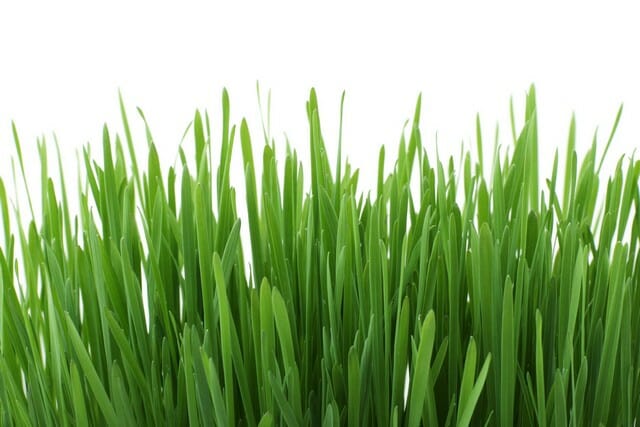
Usually, St. Augustine grass is planted by using Augustine sods or plugs. The grass has flat and broad heavy leaves. As it grows, St. Augustine grass spreads and this is helped by stolons, the horizontal shoots, which grow and spread on the ground.

St. Augustine grass spreads quickly compared to most varieties of turfgrasses, which makes it an excellent option to grow a thick and carpet-like lawn.
What Is the Best Fertilizer to Make St Augustine Grass Spread Quickly?
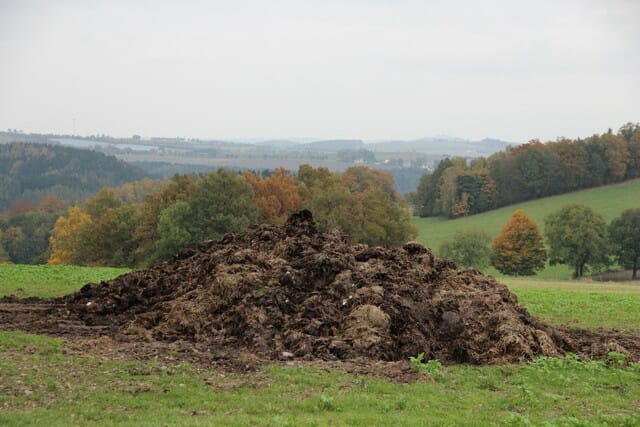
To make st augustine grass spread, grow and thrive, it requires soil with proper nutrients and so, regular fertilizer application is required as part of the lawn maintenance and lawn care. St. Augustine grass doesn’t do well in cold temperatures or waterlogged soil and requires topsoil with good content of nitrogen and salt, with lots of area, allowing the roots of the grass to spread freely.
The best fertilizer to make St. Augustine grass spread fast,is a slow release nitrogen fertilizer with elements of nitrogen, potassium and phosphorus in the ratio 3:2:1. Nitrogen is very important for the growth of St. Augustine grass and there should be around 1 pound (0.45 kg) of soluble nitrogen for every 1,000 square feet (92.9 m²), which means that there should be a dense layer of nitrogen. Care should be taken when using nitrogen fertilizer in the early stages, apply sparingly.
However, for best results, before you apply the fertilizer, measure your yard. Also, verify the chemical composition and ratios of the fertilizer brand before buying the proper one.
Once you find the proper fertilizer for your St. Augustine grass lawn, apply it uniformly and avoid over-concentrating it because it can smother the sod and damage it.

Once you apply the fertilizer, water the grass; however, you must take care not to overwater. The soil should just be damp and not soaked because St. Augustine grass does not need a lot of water. Apply the fertilizer after the final frost of the season, because applying the fertilizer before this can harm the grass.
Scotts Turf Builder Southern Lawn
This product is a fertilizer formulated for southern lawns. It’s all-in-one particles make for an even distribution of vital nutrients every time it is applied, aiding the lawn to spread quickly.
With this amazing lawn food, you can build a thick and strong lawn with thick roots in the south, all the while protecting and strengthening it against heat and drought, as well as, wear and tear. It also improves your lawns’ ability to absorb water and nutrients.
Apply Scotts Turf Builder weed and feed to any grass type and during any season. Feed a wet or dry lawn and watch it turn green after just a few days of application.
The Water Smart Formula by Scotts Turf Builder is completely pet and child-friendly and works by building a healthier lawn using less water than normal. Kids and pets may enter the lawn area immediately after treatment with this product.
The N-P-K ratio of Scotts Turf Builder is 26-2-13.
Pros
- Pet and child friendly
- Can be used during any season
- Works after only a few days
- Needs less water to work
Cons
- Over application will burn grass
- May burn due to too much sunny exposure
- Results may be delayed depending on the lawns specific needs
What Causes St. Augustine Grass to Turn Yellow?
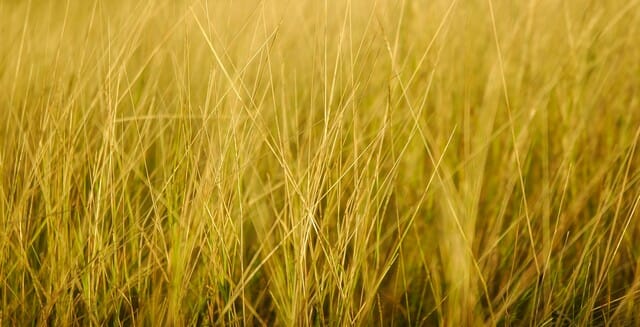
Your St. Augustine grass could be turning yellow because of many reasons. If there has been a lot of rain, this could cause the nitrogen to leach out of the soil causing the grass to turn yellow because nitrogen is essential for the green growth of the grass.
Your grass could also be turning yellow because of iron chlorosis or iron deficiency. To prevent this, in the summer months, it’s a good idea to use a liquid iron or granular fertilizer.
Brown Patches On St. Augustine Lawn
When finding brown patches on your once lush lawn, the first thing most lawn owners think about is either dehydration or animal urine. The most common cause of brown patches on a St. Augustine lawn, however, is a fungal disease known as brown patch.
St. Augustine grass is most commonly affected by brown patch disease during the months when the weather presents hot and moist climates during the day and the nights are cooler.
This disease is typically identified by patches of grass that appear light brown and thinned out. The size of these patches may range from only a couple of inches to a few feet in diameter.
If you have a brown patch infected lawn, the best is to make use of a lawn professional to apply targeted fungicides, to avoid further damage to your turf.
Proper lawn care is the best way to avoid brown patch disease. Make sure to use less fertilizer when the end of summer nears. Get into the habit of watering early in the morning. Mow your lawn regularly and be aware of signs of poor drainage.
How Often Should You Water St. Augustine Grass in the Summer?

Augustine grass requires a strict watering schedule. In general, St. Augustine grass requires watering only once in 5 to 10 days. The water should penetrate around 6 inches (15.24 cm) into the soil for the healthiest grass.
Since this grass species is quite resilient, before summer, you can water it only if you see signs of drought stress, which include bluish-colored or dull shoots or shoots rolling in on themselves. In such cases, the grass will bounce back when you water it.
TThrough the summer months, you must keep an eye on your St. Augustine grass and water it as required. The warmer temperatures mean that you may water the grass more often.
Ideally, water the grass in the morning. Avoid watering during the hottest hours of the day because, at this time, the evaporation rates are the highest, which will prevent the grass from getting the moisture it requires.
Watering the grass in the evening may cause the development of mildew or fungus because the sunlight is not enough to remove the excess water. If you notice that your St. Augustine grass is turning brown or hard, these are signs of poor hydration and nutrition.
Therefore, you must water the grass and apply fertilizer. The watering schedule for the St. Augustine grass in spring and early summer will depend on the weather. And, while the grass may be dormant in winter, you must still water it on dry, windy and warmer days to continue augustine growth.
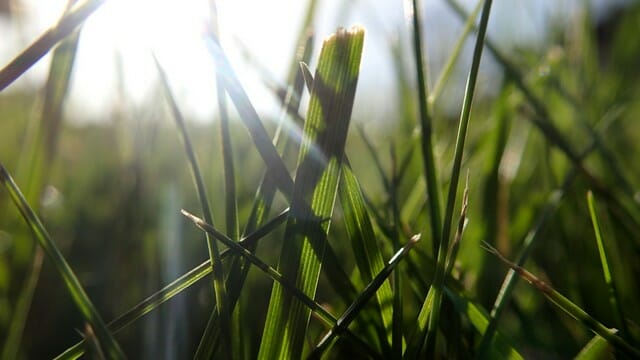
What’s the Best Soil To Get St Augustine Grass To Spread?
Augustine grass grows well in pH ranges between 5 – 8.5, although a slightly acidic pH is preferred, and calls for a thicker and fuller St. Augustine lawn. St. Augustine grass grows and thrives best in well-drained, sandy soil, and it does not do very well or spread quickly in waterlogged soil or compacted clay soils.
This is because this soil usually does not have a sufficient oxygen supply, which can prevent the soil from supporting the growth of plants. The right type of soil will be well aerated and loose textured.
It is recommended to use clean free-flowing sand or sandy loam soil for the top dressing for a St. Augustine grass lawn. This will help in cutting the amount of water collecting in the soil.
Avoid using little or no organic material.
Tip
Planting St. Augustine grass in soil that is too alkaline — pH level higher than 7.5 — the grass will appear chlorotic in comparison to the normal eye-catching blue-green color and coarsely textured grass blades.
When to Plant St. Augustine Grass

The St. Augustine grass grows quite quickly during the summer months and the growth is slower in the colder months.
A warm-season grass, St. Augustine grass should be planted in the summer months to ensure the best conditions for the grass to grow and spread quickly.
However, it is important that the grass is watered regularly, especially when the weather is hot and dry.
Once you plant the grass sods or plugs, they may require watering many times in a day, particularly in the initial weeks. The lawn will not need frequent watering once it is properly established.
The growth rate of the grass will depend on various factors such as temperature, shade, moisture control and nutrients. During the winter, the lawn will be dormant and may not require as much watering or maintenance.
Correct Mowing of St Augustines Grass
Before any mowing, make sure that the St Augustine grass plugs or sod are properly rooted and are growing robustly. Once you see the grass growing normally, you can mow to a height of not less than 3.5inches (8.89 cm), ensuring that your mower has a sharp blade. The optimum height for mowing St Augustine grass is 3.5 to 4 inches.
A good mowing routine for a St. Augustine lawn would be once every 5-7 days, assuming that it is not under any growing stress caused by, for example, heat or drought. — If this is the case, then the frequency of mowing reduces.
This type of turfgrass spreads through stems that are above the ground. These above-ground stems are known as stolon’s and they make the grass more prone to injury when cutting them too close to the ground’s surface.
Always make sure that you do not mow your grass’s leaf blades down to shorter than 2.5 inches from the ground — this would be more than one third of the blades — in order to encourage fast growth and a healthy lawn.
Leave mowed lawn clippings on the grass for increased nutrients.
How Long Does It Take for St. Augustine Grass Plugs To Spread?
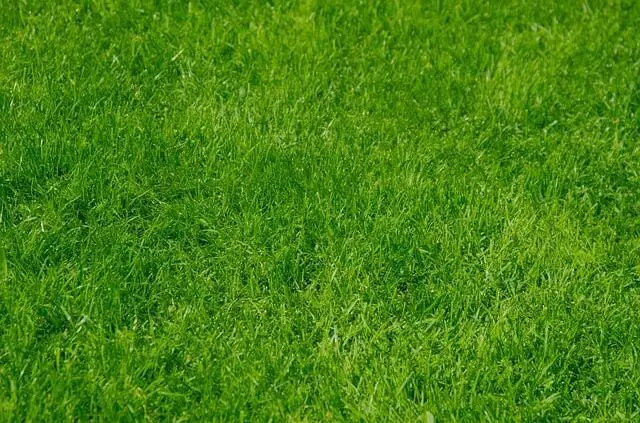
Once the roots of the St. Augustine grass plugs are established, they begin to spread. Usually, it will take around 4-14 days for the newly installed grass stolons to start spreading.
Once the growth and spreading start, the time for the lawn to be filled may vary depending on the plug spacing.
Typically, for St. Augustine grass to spread fully across a regular-sized lawn, it will take more than 1 year.
Tip: This type of grass grows and spreads fastest, during its peak growing season, which is spring and summer when the temperatures start to become warmer. The ideal soil temperature ranges between 80 and 100 degrees Fahrenheit.
If you feel like your lawn is not progressing or filling in fast enough, especially during the growing season, simply apply some nitrogen to the grass and it will aid in speeding up the growing progress.
Below is the spread guide on the basis of type, low-density and high-density planting. These are estimates on the basis of perfect conditions.
St Augustine Grass Plugs Density — How Many Plugs Will You Need?
High Density
- Plug Spacing: 6” to 11” between each plug, to create enough space for healthy root development.
- Time to Fill: 1 growing season. If conditions are perfect, you can expect to have a fully-filled, lush green lawn in roughly 6-8 months.
Typical
- Spacing: 12” to 18” between each plug. This spacing of st Augustine plugs will cause it to spread at a slightly slower rate than that of a more dense growth pattern. Meaning that you will have to wait a longer period of time until the bare spots of your lawn are filled in. Looking at the brighter side, it is more cost-effective than a higher density of plug installation, as you use fewer sprigs.
- Time to Fill: Up to 1 year. If conditions are perfect, you can expect a thick lawn in roughly 8-10 months.
Low Density
- Spacing: 13” to 25” between each plug. This spacing is recommended for lawns that receive little amount of activity and foot traffic, since it takes a good amount of time for your lawn to be fully filled with such a wide spacing.
- Time to Fill: More than 1 year

Getting Rid Of And Avoiding Weeds
Invading weeds tend to overtake a fresh, newly planted St. Augustine sod. It does, however, depend on how it was installed. If you have a warm-season lawn which may be established early in spring, be aware of weeds, this type of grass lawn tends to be quite susceptible to a weed invasion.
If big spaces are left between the sod patches during installation, you may quickly notice it when broadleaf weeds start to emerge.
It is in the weeds nature, to compete for water and nutrients found in the soil. This makes it difficult for the grass to grow, resulting in slow and thin growth, making your lawn look sparse.
The only way to fix this problem, is to kill weeds by making use of a mild herbicide or avoid the problem altogether by applying a pre-emergent weed killer at least 5 weeks before installing your grass plugs. This is a great way to control weeds, which in turn aids your grass in spreading quickly.
Grass Runners Spreading On Top Of Each Other
St. Augustine lawns that are well established basically consist of a thick mesh of interwoven grass runners. These runners, however, do not always spread across the soil surface but rather start growing aggressively on top of one another, giving the turfgrass an odd shape, as well as making it appear as though it is not filling in the thin spots.
This phenomenon is known as looping and is caused by several factors. These factors include:
- Mowing too low
- Making use of too much fertilizer
- Using excessive amounts of pre-emergent herbicides
- Nutrient deficiencies
PParting Words On How To Make St. Augustine Grass Spread Quickly
We hope that this information is helpful to make your St. Augustine grass spread faster, and grow thicker. However, remember that planting your lawn in the summer, watering it properly and practicing proper lawn care will help it to grow and spread vigorously.
Make sure to follow a proper maintenance schedule, and your St Augustine lawn will be thick, lush and gorgeous, faster, so that you can enjoy it all year long.
